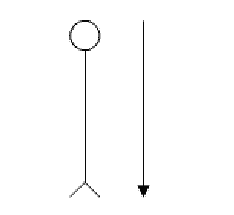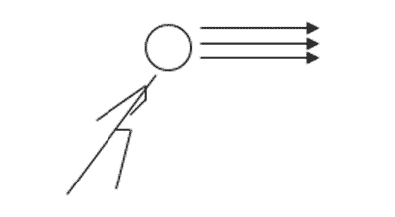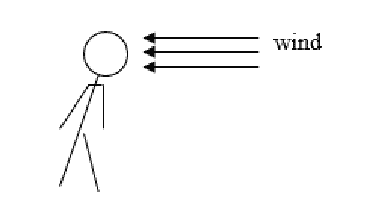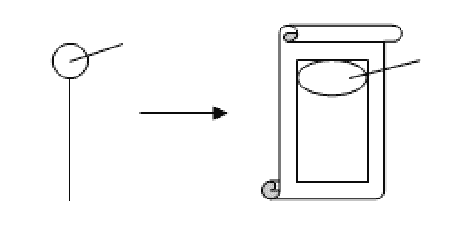REFLECTION OF SPATIAL CHARACTERISTICS OF THE HUMAN HEAD AND THEIR COGNITIVE PROCESSING IN ENGLISH PHRASEOLOGICAL UNITS
REFLECTION OF SPATIAL CHARACTERISTICS OF THE HUMAN HEAD AND THEIR COGNITIVE PROCESSING IN ENGLISH PHRASEOLOGICAL UNITS
Abstract
This research is carried out within the framework of cognitive linguistics and is devoted to the problem of interrelation between the language and spatial perception of the surrounding world. It aims at identifying how spatial characteristics of an object and further cognitive processing of spatial experience affect the meaning of phraseological units. The study focuses on English set expressions with the word head. Due to the fact that human perception is anthropocentric, the head as a vitally important part of the body serves an essential reference point in space orientation. English phraseological units show that in statics, the human head is perceived as the upper part of a vertically oriented body. In dynamics, it is viewed as its upper-front part. The idea that the head has a round shape is also reflected in the English phraseology. Cognitive processing of spatial characteristics of the human head makes it possible to apply this word in reference to the top part of inanimate objects. And metaphorical transference allows to describe non-spatial, for example, social relations in terms of spatial ones. Studying the manifestation of spatial experience in the language helps to clarify complex interconnection between different elements of human cognition.
1. Introduction
Cognitive approach in linguistics focuses on the role of human factor in speech-thinking processes and studies the cognitive base of linguistic concepts and categories. Some of the most important cognitive processes are those of space perception and categorization of human spatial experience. The way these cognitive components can be reflected in the language is of particular interest. In this respect, the relevance of our research is determined by the necessity to study the representation of the existential category of space in the language.
The purpose of the research is to reveal how peculiarities of spatial characteristics and their cognitive processing influence the semantics of set expressions. The object of the work is English phraseological units containing the word head. The choice of this very body part is explained by its vital importance for a human-being. Besides, it is a well-known fact that space perception and conceptualization are anthropocentric. It is the head that serves a key reference point in man’s orientation in space.
The novelty of the work is determined by an attempt to describe the reflection of spatial characteristics of the human head in the phraseological system of the English language. It should be noted that the description of phraseological units with the word head referring to an animal body part goes beyond the scope of this article.
The research material comprises seven English-Russian and English-English general language and phraseological dictionaries , , , , . The total number of the stable expressions considered equals 105 units.
2. Research methods and principles
A special range of issues in cognitive linguistics is associated with the study of how spatial perception and its further conceptualization and categorization are reflected in the language. Foreign and domestic scientists have carried out significant research in this area , , , , . Some works dwell on the problems of expressing the category of space in the phraseological system of the language , , . However, this aspect still requires a more detailed coverage.
Apart from research in cognitive linguistics, the theoretical and methodological basis of our study was scientific works on phraseology , , . We consider a phraseological unit to be a stable word combination with a partially or fully transferred meaning. Since phraseologisms are complex language units, it is necessary to pay special attention to how exactly the meanings of their components interact in the process of phraseological meaning formation.
In the course of the study, general and specific methods of cognition of both theoretical and empirical levels were used. The research, along with the general scientific inductive-deductive method and the method of quantitative calculation and classification of phenomena, is based on a methodology for studying cognitive processes. The complex use of these methods provides a new vision of some theoretical aspects of cognitive linguistics and phraseology.
For clarity, the spatial relations in the studied phraseological units with the word head are presented in the form of schemes.
3. Main results
The reference point in describing spatial relations is usually a human-being: it is relative to him that the location of other objects is viewed. The head, as a part of the body, is an important element in space orientation. In this regard, it appears necessary to consider the reflection of the spatial characteristics of the human head in phraseologisms with the lexeme head, which is one of the basic words of the English language.
The position of the head in relation to the human body as a whole is determined by its normal spatial orientation. The canonical position of man is the upright one and it explains the dominant role of the vertical dimension for him. Due to anatomical peculiarities, the perception and conceptualization of the human body is directed along the “top-bottom” line, which makes vertical position in space inherent in man . In this regard, the human head is perceived as the upper part of a vertically oriented body.
Spatial characteristics of the head not only of humans, but also of animals are reflected in dictionary definitions. Thus, according to Oxford Dictionary the word head is polysemantic:
1. The anterior part of the body of an animal, when separated by a neck, or otherwise distinguished, from the rest of the body.
2. In man, the upper division of the body, joined to the trunk by the neck .
In Webster’s Dictionary head is defined in the following way: the top part of the body in humans, the apes, etc., or the front part in most other animals . These definitions prove the idea that the perception of the head position in space is accompanied by some cognitive processing. First of all, the concepts PART – WHOLE are activated which results in interpreting the head as a body part. Secondly, the information about the position of the head of a man and that of an animal is structured differently which involves activating different concepts: TOP – BOTTOM in the first case and FRONT – BACK in the second one. As mentioned above, phraseologisms that reflect the position of a horizontally oriented animal’s head are not the object of our study. Let us consider how the conceptual features of the head as the upper part of a vertically oriented human body are implemented in the studied phraseological units.
Being the upper part of a human body, the head can be contrasted to the lower one, which is observed in the set expression from head to foot – over the whole length of one’s body; in every part of one’s being, nature, character: And with another explosion the water hit him from head to foot . This phraseological unit reflects the vertical orientation of the human body in space and shows it at full height (cf. the Russian expression “с головы до пят”). Spatial relations in this set phrase can be schematically depicted as follows (see Fig. 1):

Figure 1 - Spatial relations in the phraseological unit from head to foot
It is notable that when running or walking, a human body is perceived to be positioned not strictly vertically, but somewhat leaning forward. This fact may be the reason for the head to have a “dual locative potential”: it is interpreted as being above and in front of other parts of the body . So, in dynamics the position of man’s head in space is structured not only by the concepts TOP – BOTTOM, but also by FRONT – BACK. The perception of the head as the upper-front part of the human body is clearly reflected in a number of English set expressions: head first – 1. (moving, esp. falling) with one’s head before the rest of the body: She fell head first down the stairs; 2. with too much speed and too little thought: She plunged head first into a new career ; head wind – a wind blowing from directly in front . The semantics of these phraseological units depends on the spatial characteristics of the head in space, and the idea that it is not only the upper, but also the front part of a human body is emphasized. In the former example, the phraseological unit creates an image of a person making a forward movement: in the process of walking, running, or, possibly, when falling, the individual’s body is leaned forward and the head is perceived as its upper-front part (see Fig. 2).

Figure 2 - Spatial relations in the set expression head first

Figure 3 - Spatial relations in the set phrase head wind
Let us turn to the conceptualization of spatial experience in phraseological units with the word head. This part of the human body includes important sensory organs and the brain, which controls all life processes. The structure of the human body and peculiarities of man’s subject activity determine the distinction between “top” – “bottom”, “front” – “back” and explain the greater importance of the upper and front parts compared to the lower and back ones. This hierarchy of spatial relations exists not in the objective world, but only in human consciousness. Since basic spatial concepts have a pronounced anthropomorphic nature, the imposition of such a spatial structure on any object is the first natural step in identifying and categorizing it as an objective entity .
The position of the head at the top of the human body, the importance and significance of this organ is expressed in the phraseological unit at the head – in the position of command or superiority; chief, principal, capital . This set phrase illustrates the transference from the “source area” to the “target area”, which is typical of a conceptual metaphor known as understanding and experiencing phenomena of one kind in terms of phenomena of another kind. Thanks to metaphorical transference, it becomes possible to use the expression at the head in the sentence You are at the head of the list . The list on a sheet of paper is perceived as an integral object. “At the head of the list” means at the top, at the beginning of the list. Cognitive processing of spatial experience leads to the shift from the concept of the upper part of the human body to the concept of the upper part of an inanimate object (see Fig. 4):

Figure 4 - Conceptual shift explaining spatial relations in the phrase at the head of the list
1) to burst (about a boil): It’s a boil, you know. There’s nothing to do but wait for them to come to a head;
2) reach the highest point; sharply escalate: It was after the 1959 election that the battle within the party against the nuclear strategy of the Right Wing came to a head ;
3) to come to a state of climax or crisis when urgent action is needed: The government’s difficulties came to a head when the miners went on strike .
The conceptual shift makes it possible to use the word head in reference to an inanimate object: the upper part of a furuncle is attributed anthropomorphic features and it is identified in its shape and position in space with a human head. Moreover, as the examples above show, further processing of spatial characteristics can lead to the extension of the described spatial relations to a wide range of non-spatial concepts, such as a battle, difficulties, etc. It is interesting to note that in the phraseological unit in question the reference can be not only to a furuncle, but also to a head of cabbage: “This expression may refer to farmers waiting for cabbage leaves to grow together and form a head” . If this is the case, anthropomorphism is manifested in the fact that a head of cabbage is associated in shape with a human head. One way or another, the semantics of the phraseological unit under consideration is largely determined by spatial characteristics of the head.
The phraseological unit the head and front of something has two meanings:
1) the limit, the top of something; the most important, essential: Othello: ... true, I have married her: the very head and front of my offending hath this extent, no more (W. Shakespeare, “Othello”, act I, sc. 3);
2) leader, head, chief of something: You are the nominal head and front of this whole movement, in opposition to me at present, and you are the one I have to look to .
Based on metaphorical transference, the upper front part is associated with the most important and significant property of an object, be it animate or inanimate, real or abstract. Furthermore, the given example shows that the meaning of phraseological units can be built on an orientational metaphor that has not only a physical, but also a social basis. Status is correlated with (social) dominance, and (physical) dominance is oriented as TOP. Such metaphorical orientations are not arbitrary: they are based on our physical and cultural experience.
4. Discussion
The undertaken study shows that spatial characteristics of the human head and their cognitive processing are vividly reflected in the English phraseological system.
Stable word combinations indicate that the head is perceived as the upper part of the human body in statics and the upper-front part in dynamics. English phraseology also views the head as having a round shape.
Thanks to the metaphorical transference from the source area to the target area, the concept of head can be applied to the upper-front part of an inanimate object attributing anthropomorphic characteristics to it. Man’s physical and cultural experience makes it possible to describe non-spatial, for example, social relations in terms of spatial ones.
Since the research carried out at the junction of cognitive linguistics and phraseology turned out to be fruitful, we consider it to be one more reason justifying the introduction of the term “cognitive phraseology” into linguistic usage.
5. Conclusion
Information about the world cannot help finding its reflection and its fixation in linguistic forms.
The research of the representation of spatial relations in the language shows how an infinite variety of spatial configurations undergoes spatial conceptualization and categorization in the process of human thinking. It also helps to reveal what spatial characteristics are considered relevant enough to receive their linguistic expression.
To conclude, the study on how spatial perception and spatial experience are manifested in the language allows scholars to comprehend the complex nature of the relationship between language and cognition.
